 ETHOS FALL RESEARCH SEMINAR
ETHOS FALL RESEARCH SEMINAR ETHOS FALL RESEARCH SEMINAR
ETHOS FALL RESEARCH SEMINAR
Engineers in Technical Humanitarian Opportunities of Service
Aprovecho Research Center, November 10-14, 2003
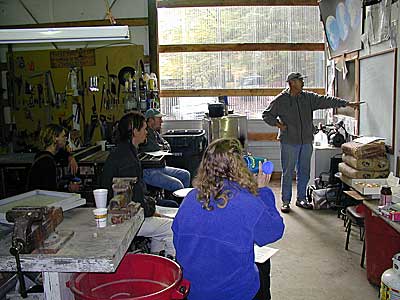 |
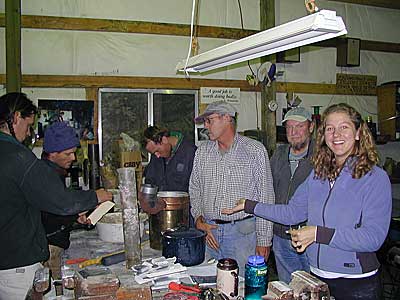 |
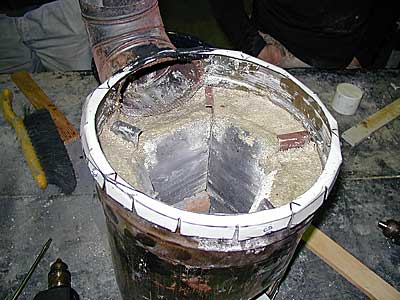 |
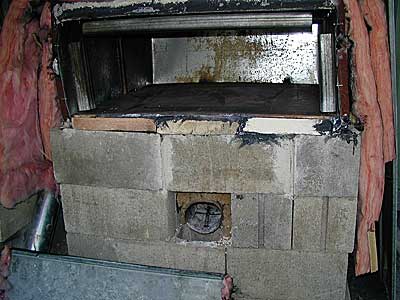 |
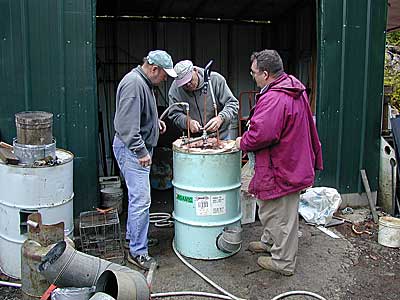 |
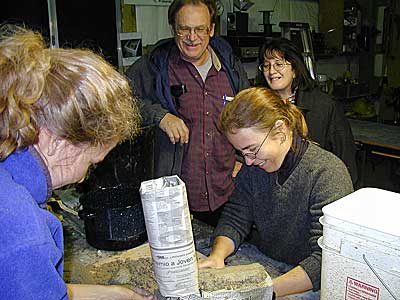 |
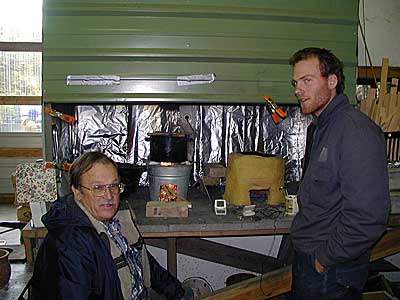 |
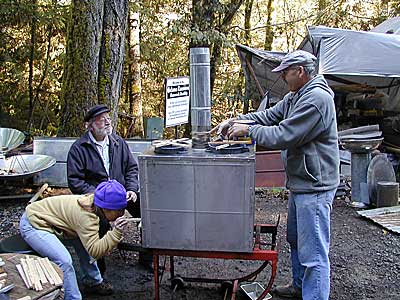 |
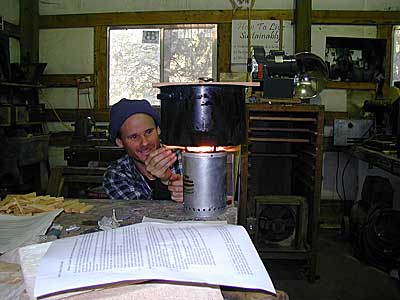 |
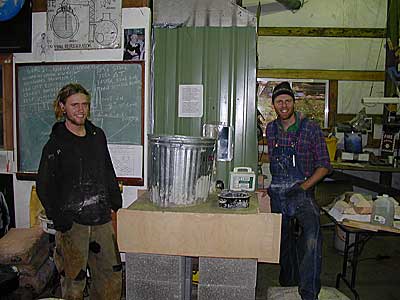 |
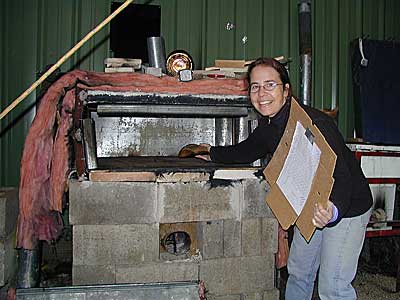 |
Dear Friends,
I was looking around the dinner table at the 12 participants in the Fall seminar and realized that I really enjoy these weeks! Building stoves, doing experiments, talking to stove colleagues is my kind of entertainment, and I learn as much as anyone although I’m one of the “teachers”. I’ve always enjoyed these seminars but this one was as much fun as any other, perhaps it was the best so far, for me.
We accomplished the following:
1.) Built a prototype commercial stove for Honduras using insulating bricks and a chimney.
2.) Made tin can Rocket type camping stoves.
3.) Dr. Winiarski designed and directed the building of an instantaneous wood fired water heater
4.) We successfully fired a kiln load of insulative ceramic experimental bricks
5.) Three stoves were tested using our variation of the VITA ’85 standards
6.) A new brick recipe using cement and vermiculite sent from Durban, South Africa was made
7.) Tested the prototype bread oven now being disseminated in Uganda
8.) Built a modified Lorena stove following directions in a booklet from GIRA, a Mexican NGO.
Lessons Learned:
1.) Chimneys that join the stove body above the Rocket L shaped combustion chamber pull hot flue gases away from the pot lowering the fuel efficiency of the stove. But, chimneys that join the stove body well below the top of the Rocket combustion chamber do not lower overall efficiency.
2.) Using copper pipe to heat water is problematic since water can turn to steam scalding bathers. Larry solves this problem by returning the tube to a five gallon cylinder also exposed to hot flue gases. As well as adding beneficial amounts of surface area, the tank absorbs any steam before it can interfere with showering.
3.) Ground up peanut shells seem to work well in insulative ceramic brick recipes. Also, it is possible to join harder ceramic surfaces to insulative brick. This ceramic shell protects the insulation.
4.) The VITA ’85 International Testing Standards suggest that a Water Boiling Test should not reward the excess production of steam. Instead their test, based on Specific Consumption, predicts fuel use when cooking. Our revision of this test was used for the first time by participants, who helped to refine procedures.
5.) Bricks made using cement and vermiculite are used in Durban in a kiln that fires vermiculite. We will send the test bricks to Dr. Pinnell at U/Dayton for testing.
6.) Peter Scott reported that the Rocket bread ovens built by GTZ in Uganda used 5 kilos of wood to bake 17 kilos of bread. The group made nine loaves of wheat bread that weighed 5.56 kilos when baked. The oven was hot for 72 minutes at an average temperature of 375F. The amount of wood used during the baking process was 1.2 kilos, which substantiates Peter’s report.
7.) GIRA has been making modified Lorena stoves for many years in Mexico. We built a copy of this stove to determine the effect of thermally isolating the heat from the stove body. More to follow!
This will be a busy winter. With help from ETHOS members we are setting up the emission equipment purchased with a $25,000 grant from the Murdock Foundation. We look forward to testing all kinds of stoves from the open fire to gasified stoves with fans.
All Best,
Dean